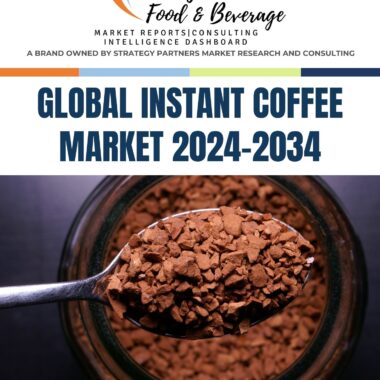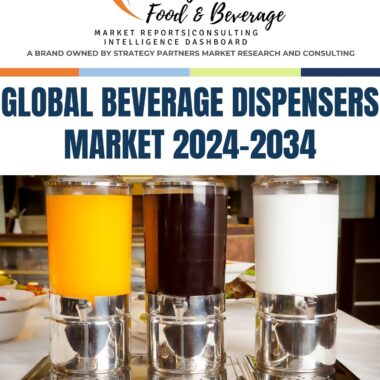Description
Tea is one of the most popular beverages in the world, with a rich history and culture dating back centuries. Tea is produced from the leaves of the Camellia sinensis plant, which is native to Asia. Tea is available in a variety of forms, including black tea, green tea, white tea, and oolong tea. Each type of tea has its own unique flavor and aroma.
Tea is consumed by people of all ages and backgrounds around the world. It is a popular beverage for both social gatherings and personal enjoyment. Tea is also often used for medicinal purposes, as it has a number of health benefits.
The global tea market is expected to grow significantly in the coming years, driven by increasing demand from emerging markets, the growing popularity of healthy beverages, and the rising awareness of the health benefits of tea.
Emerging markets, such as China, India, and Brazil, are experiencing strong growth in demand for tea. This is due to the growing population and rising disposable incomes in these markets. In addition, consumers in emerging markets are becoming more aware of the health benefits of tea, which is driving demand for this beverage.
The growing popularity of healthy beverages is another factor driving growth in the global tea market. Consumers are increasingly looking for healthy beverage options that can help them improve their health and well-being. Tea is a healthy beverage that is low in calories and fat, and it is also a good source of antioxidants.
The rising awareness of the health benefits of tea is also driving growth in the global tea market. Tea has been shown to have a number of health benefits, including reducing the risk of heart disease, stroke, and cancer. Tea can also help to improve cognitive function and boost the immune system.
The global tea market is segmented by type, distribution channel, and region. By type, the market is segmented into black tea, green tea, white tea, oolong tea, and other teas. Black tea is the largest segment of the market, accounting for over 50% of global demand. Green tea is the second-largest segment of the market, followed by oolong tea and other teas.
By distribution channel, the global tea market is segmented into on-trade and off-trade. On-trade refers to sales through restaurants, cafes, and other foodservice establishments. Off-trade refers to sales through retail stores, such as grocery stores, convenience stores, and online retailers. Off-trade is the largest distribution channel for tea, accounting for over 80% of global demand.
By region, the global tea market is segmented into North America, Europe, Asia Pacific, Latin America, and the Middle East and Africa. Asia Pacific is the largest regional market for tea, accounting for over 60% of global demand. Europe is the second-largest regional market, followed by North America.
Some of the key players in the global tea market include Unilever, Tata Consumer Products, Associated British Foods, and Dilmah. These companies are investing heavily in research and development to develop new and innovative tea products. They are also expanding their presence in emerging markets to capitalize on the growing demand for tea.
Growing popularity of specialty teas: Specialty teas are teas that are produced from specific tea gardens or regions. Specialty teas are often more expensive than traditional teas, but they offer a unique flavor and aroma. The growing popularity of specialty teas is driving demand for high-quality tea products.
Rising awareness of sustainable tea production: Consumers are becoming more interested in sustainable products. Tea companies are responding to this demand by developing more sustainable tea production practices. For example, some tea companies are using organic farming methods and reducing their environmental impact.
Growth of the e-commerce market: The e-commerce market is growing rapidly, and this is providing new opportunities for tea companies to reach consumers. Tea companies are increasingly selling their products online, and this is helping to drive growth in the global tea market.
The global tea market is a dynamic and growing market. The market is being driven by a number of factors, including increasing demand from emerging markets, the growing popularity of healthy beverages, and the rising awareness of the health benefits of tea. Tea companies are investing heavily in research and development to develop new and innovative tea products, and they are also expanding their presence in emerging markets to capitalize on the growing demand for tea.
Table of Content
1 Market Introduction- Global Tea Market
1.1 Market Segmentation- Global Tea Market
1.2 Key Trends- Global Tea Market
1.2.1 Drivers
1.2.2 Restraints
1.2.3 Challenges
2 Global Market Forecast- Global Tea Market
2.1.1 By Region
2.1.2 By Form
2.1.3 By Product Type
2.1.4 By Distribution Channel
3 Country Wise Forecast- Global Tea Market
3.1 US
3.1.1 Key Trends
3.1.2 Consumer Spending
o Population
o GDP
o CPI
o Spend per Capita
o Spend as a proportion of GDP
3.1.3 Market Forecast- US Tea Market
o By Form
o By Product Type
o By Distribution Channel
3.1.4 Key Competitors- US Tea Market
3.1.5 EXIM
3.1.6 Patents
3.1.7 Scenario Analysis- US Tea Market
3.1.8 Opportunity Analysis- US Tea Market
3.2 Canada
3.2.1 Key Trends
3.2.2 Consumer Spending
o Population
o GDP
o CPI
o Spend per Capita
o Spend as a proportion of GDP
3.2.3 Market Forecast- Canada Tea Market
o By Form
o By Product Type
o By Distribution Channel
3.2.4 Key Competitors- Canada Tea Market
3.2.5 EXIM
3.2.6 Patents
3.2.7 Scenario Analysis- Canada Tea Market
3.2.8 Opportunity Analysis- Canada Tea Market
3.3 UK
3.3.1 Key Trends
3.3.2 Consumer Spending
o Population
o GDP
o CPI
o Spend per Capita
o Spend as a proportion of GDP
3.3.3 Market Forecast- UK Tea Market
o By Form
o By Product Type
o By Distribution Channel
3.3.4 Key Competitors- UK Tea Market
3.3.5 EXIM
3.3.6 Patents
3.3.7 Scenario Analysis- UK Tea Market
3.3.8 Opportunity Analysis- UK Tea Market
3.4 Germany
3.4.1 Key Trends
3.4.2 Consumer Spending
o Population
o GDP
o CPI
o Spend per Capita
o Spend as a proportion of GDP
3.4.3 Market Forecast- Germany Tea Market
o By Form
o By Product Type
o By Distribution Channel
3.4.4 Key Competitors- Germany Tea Market
3.4.5 EXIM
3.4.6 Patents
3.4.7 Scenario Analysis- Germany Tea Market
3.4.8 Opportunity Analysis- Germany Tea Market
3.5 France
3.5.1 Key Trends
3.5.2 Consumer Spending
o Population
o GDP
o CPI
o Spend per Capita
o Spend as a proportion of GDP
3.5.3 Market Forecast- France Tea Market
o By Form
o By Product Type
o By Distribution Channel
3.5.4 Key Competitors- France Tea Market
3.5.5 EXIM
3.5.6 Patents
3.5.7 Scenario Analysis- France Tea Market
3.5.8 Opportunity Analysis- France Tea Market
3.6 Italy
3.6.1 Key Trends
3.6.2 Consumer Spending
o Population
o GDP
o CPI
o Spend per Capita
o Spend as a proportion of GDP
3.6.3 Market Forecast- Italy Tea Market
o By Form
o By Product Type
o By Distribution Channel
3.6.4 Key Competitors- Italy Tea Market
3.6.5 EXIM
3.6.6 Patents
3.6.7 Scenario Analysis- Italy Tea Market
3.6.8 Opportunity Analysis- Italy Tea Market
3.7 Ireland
3.7.1 Key Trends
3.7.2 Consumer Spending
o Population
o GDP
o CPI
o Spend per Capita
o Spend as a proportion of GDP
3.7.3 Market Forecast- Ireland Tea Market
o By Form
o By Product Type
o By Distribution Channel
3.7.4 Key Competitors- Ireland Tea Market
3.7.5 EXIM
3.7.6 Patents
3.7.7 Scenario Analysis- Ireland Tea Market
3.7.8 Opportunity Analysis- Ireland Tea Market
3.8 Spain
3.8.1 Key Trends
3.8.2 Consumer Spending
o Population
o GDP
o CPI
o Spend per Capita
o Spend as a proportion of GDP
3.8.3 Market Forecast- Spain Tea Market
o By Form
o By Product Type
o By Distribution Channel
3.8.4 Key Competitors- Spain Tea Market
3.8.5 EXIM
3.8.6 Patents
3.8.7 Scenario Analysis- Spain Tea Market
3.8.8 Opportunity Analysis- Spain Tea Market
3.9 Belgium
3.9.1 Key Trends
3.9.2 Consumer Spending
o Population
o GDP
o CPI
o Spend per Capita
o Spend as a proportion of GDP
3.9.3 Market Forecast- Belgium Tea Market
o By Form
o By Product Type
o By Distribution Channel
3.9.4 Key Competitors- Belgium Tea Market
3.9.5 EXIM
3.9.6 Patents
3.9.7 Scenario Analysis- Belgium Tea Market
3.9.8 Opportunity Analysis- Belgium Tea Market
3.10 Switzerland
3.10.1 Key Trends
3.10.2 Consumer Spending
o Population
o GDP
o CPI
o Spend per Capita
o Spend as a proportion of GDP
3.10.3 Market Forecast- Switzerland Tea Market
o By Form
o By Product Type
o By Distribution Channel
3.10.4 Key Competitors- Switzerland Tea Market
3.10.5 EXIM
3.10.6 Patents
3.10.7 Scenario Analysis- Switzerland Tea Market
3.10.8 Opportunity Analysis- Switzerland Tea Market
3.11 Sweden
3.11.1 Key Trends
3.11.2 Consumer Spending
o Population
o GDP
o CPI
o Spend per Capita
o Spend as a proportion of GDP
3.11.3 Market Forecast- Sweden Tea Market
o By Form
o By Product Type
o By Distribution Channel
3.11.4 Key Competitors- Sweden Tea Market
3.11.5 EXIM
3.11.6 Patents
3.11.7 Scenario Analysis- Sweden Tea Market
3.11.8 Opportunity Analysis- Sweden Tea Market
3.12 Portugal
3.12.1 Key Trends
3.12.2 Consumer Spending
o Population
o GDP
o CPI
o Spend per Capita
o Spend as a proportion of GDP
3.12.3 Market Forecast- Portugal Tea Market
o By Form
o By Product Type
o By Distribution Channel
3.12.4 Key Competitors- Portugal Tea Market
3.12.5 EXIM
3.12.6 Patents
3.12.7 Scenario Analysis- Portugal Tea Market
3.12.8 Opportunity Analysis- Portugal Tea Market
3.13 The Netherlands
3.13.1 Key Trends
3.13.2 Consumer Spending
o Population
o GDP
o CPI
o Spend per Capita
o Spend as a proportion of GDP
3.13.3 Market Forecast- Netherlands Tea Market
o By Form
o By Product Type
o By Distribution Channel
3.13.4 Key Competitors- Netherlands Tea Market
3.13.5 EXIM
3.13.6 Patents
3.13.7 Scenario Analysis- Netherlands Tea Market
3.13.8 Opportunity Analysis- Netherlands Tea Market
3.14 Brazil
3.14.1 Key Trends
3.14.2 Consumer Spending
o Population
o GDP
o CPI
o Spend per Capita
o Spend as a proportion of GDP
3.14.3 Market Forecast- Brazil Tea Market
o By Form
o By Product Type
o By Distribution Channel
3.14.4 Key Competitors- Brazil Tea Market
3.14.5 EXIM
3.14.6 Patents
3.14.7 Scenario Analysis- Brazil Tea Market
3.14.8 Opportunity Analysis- Brazil Tea Market
3.15 Mexico
3.15.1 Key Trends
3.15.2 Consumer Spending
o Population
o GDP
o CPI
o Spend per Capita
o Spend as a proportion of GDP
3.15.3 Market Forecast- Mexico Tea Market
o By Form
o By Product Type
o By Distribution Channel
3.15.4 Key Competitors- Mexico Tea Market
3.15.5 EXIM
3.15.6 Patents
3.15.7 Scenario Analysis- Mexico Tea Market
3.15.8 Opportunity Analysis- Mexico Tea Market
3.16 Australia
3.16.1 Key Trends
3.16.2 Consumer Spending
o Population
o GDP
o CPI
o Spend per Capita
o Spend as a proportion of GDP
3.16.3 Market Forecast- Australia Tea Market
o By Form
o By Product Type
o By Distribution Channel
3.16.4 Key Competitors- Australia Tea Market
3.16.5 EXIM
3.16.6 Patents
3.16.7 Scenario Analysis- Australia Tea Market
3.16.8 Opportunity Analysis- Australia Tea Market
3.17 China
3.17.1 Key Trends
3.17.2 Consumer Spending
o Population
o GDP
o CPI
o Spend per Capita
o Spend as a proportion of GDP
3.17.3 Market Forecast- China Tea Market
o By Form
o By Product Type
o By Distribution Channel
3.17.4 Key Competitors- China Tea Market
3.17.5 EXIM
3.17.6 Patents
3.17.7 Scenario Analysis- China Tea Market
3.17.8 Opportunity Analysis- China Tea Market
3.18 Indonesia
3.18.1 Key Trends
3.18.2 Consumer Spending
o Population
o GDP
o CPI
o Spend per Capita
o Spend as a proportion of GDP
3.18.3 Market Forecast- Indonesia Tea Market
o By Form
o By Product Type
o By Distribution Channel
3.18.4 Key Competitors- Indonesia Tea Market
3.18.5 EXIM
3.18.6 Patents
3.18.7 Scenario Analysis- Indonesia Tea Market
3.18.8 Opportunity Analysis- Indonesia Tea Market
3.19 India
3.19.1 Key Trends
3.19.2 Consumer Spending
o Population
o GDP
o CPI
o Spend per Capita
o Spend as a proportion of GDP
3.19.3 Market Forecast- India Tea Market
o By Form
o By Product Type
o By Distribution Channel
3.19.4 Key Competitors- India Tea Market
3.19.5 EXIM
3.19.6 Patents
3.19.7 Scenario Analysis- India Tea Market
3.19.8 Opportunity Analysis- India Tea Market
3.20 Japan
3.20.1 Key Trends
3.20.2 Consumer Spending
o Population
o GDP
o CPI
o Spend per Capita
o Spend as a proportion of GDP
3.20.3 Market Forecast- Japan Tea Market
o By Form
o By Product Type
o By Distribution Channel
3.20.4 Key Competitors- Japan Tea Market
3.20.5 EXIM
3.20.6 Patents
3.20.7 Scenario Analysis- Japan Tea Market
3.20.8 Opportunity Analysis- Japan Tea Market
3.21 South Korea
3.21.1 Key Trends
3.21.2 Consumer Spending
o Population
o GDP
o CPI
o Spend per Capita
o Spend as a proportion of GDP
3.21.3 Market Forecast- South Korea Tea Market
o By Form
o By Product Type
o By Distribution Channel
3.21.4 Key Competitors- South Korea Tea Market
3.21.5 EXIM
3.21.6 Patents
3.21.7 Scenario Analysis- South Korea Tea Market
3.21.8 Opportunity Analysis- South Korea Tea Market
3.22 Thailand
3.22.1 Key Trends
3.22.2 Consumer Spending
o Population
o GDP
o CPI
o Spend per Capita
o Spend as a proportion of GDP
3.22.3 Market Forecast- Thailand Tea Market
o By Form
o By Product Type
o By Distribution Channel
3.22.4 Key Competitors- Thailand Tea Market
3.22.5 EXIM
3.22.6 Patents
3.22.7 Scenario Analysis- Thailand Tea Market
3.22.8 Opportunity Analysis- Thailand Tea Market
3.23 Malaysia
3.23.1 Key Trends
3.23.2 Consumer Spending
o Population
o GDP
o CPI
o Spend per Capita
o Spend as a proportion of GDP
3.23.3 Market Forecast- Malaysia Tea Market
o By Form
o By Product Type
o By Distribution Channel
3.23.4 Key Competitors- Malaysia Tea Market
3.23.5 EXIM
3.23.6 Patents
3.23.7 Scenario Analysis- Malaysia Tea Market
3.23.8 Opportunity Analysis- Malaysia Tea Market
3.24 Singapore
3.24.1 Key Trends
3.24.2 Consumer Spending
o Population
o GDP
o CPI
o Spend per Capita
o Spend as a proportion of GDP
3.24.3 Market Forecast- Singapore Tea Market
o By Form
o By Product Type
o By Distribution Channel
3.24.4 Key Competitors- Singapore Tea Market
3.24.5 EXIM
3.24.6 Patents
3.24.7 Scenario Analysis- Singapore Tea Market
3.24.8 Opportunity Analysis- Singapore Tea Market
4 Opportunity Matrix- Global Tea Market
5 Conclusions and Recommendations- Global Tea Market
6 About Global Food & Beverage




